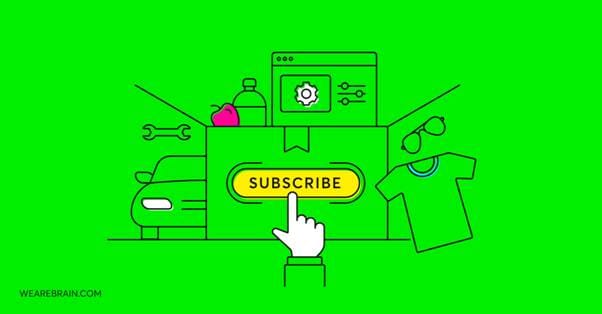
Have you noticed that most things today have monthly fees? Your favorite Netflix movies and meals delivered seem like the world has silently transitioned from ownership to membership. The subscription economy is changing how people live, work, and spend.
It goes beyond convenience. Subscription has become a lifestyle. People want flexible access, regular updates, and the sensation that something fresh is constantly waiting instead of buying and maintaining things. Explore why this pattern is developing and its future implications.
From Ownership to Access
Once, people purchased things outright. The automobile, DVD, or book you bought was yours forever. Many now prefer subscriptions to ownership. Subscriptions are everywhere now, but you can still activate your $75 free chip no deposit promo without paying upfront to get access. Netflix has movies, Spotify has millions of songs, and Apple One bundles storage, music, and TV programs for one fee.
This method suits current life. Sharing, streaming, and switching are faster than ever. Subscriptions allow switching services, trying new things, and never worrying about upkeep or resale value easier. Why buy a costly picture editing application when Adobe Creative Cloud is available for a cheap monthly charge and always has the newest version?
Access feels dynamic, while ownership feels immovable. The subscription economy is powerful because it suits modern life’s pace.
Psychology Behind It
Subscriptions seem realistic at first. Psychology is also crucial. Regular modest payments hurt less than one big one. Customers regard it as doable, like purchasing coffee every day instead of an espresso machine.
Another reason: curation and customization. Subscriptions guarantee a more personalized experience. Consider Netflix’s suggestions or Spotify’s “Discover Weekly” playlist. These tiny gestures make consumers feel understood and cherished, building loyalty beyond the price.
Surprise is present. Beauty, food, and clothing subscription boxes spark interest. Monthly box customers are captivated by the emotional rush of receiving a gift from themselves.
Why Businesses Love It
Subscriptions provide corporate stability. Recurring revenue replaces unexpected one-time purchases for businesses. That simplifies planning, investment, and growth.
Companies acquire crucial data. With every renewal and click, they learn client preferences and behavior. Feedback helps them enhance services and establish partnerships.
Businesses choose subscriptions for these reasons:
- Regular payments help organizations plan and establish a stable cash flow.
- Happy subscribers remain longer, decreasing marketing expenditures.
- Adding consumers to a digital product is cheap.
- Feedback loops enable upgrades, upsells, and continuous improvement.
- Loyal subscribers develop groups that propagate favorable word of mouth.
Subscriptions are used by every business because of constant revenue, data insights, and loyal consumers.
Everyday Subscription Economy Examples
Though subscriptions are mostly for streaming and digital tools, they have expanded beyond that.
Food and Beverage
HelloFresh and Blue Apron supply weekly meal packages, making home cooking easy without shopping stress. Coffee enthusiasts receive weekly, freshly roasted, taste-curated beans.
Fashion and Beauty
Rent the Runway and Stitch Fix provide changing wardrobes. You may rent designer outfits for gatherings or get monthly style suggestions. Sustainability with elegance.
Transportation
Car ownership is shifting. Volvo and Porsche provide monthly automobile memberships that include insurance, maintenance, and the vehicle. Switching from sedan to SUV? Just exchange.
Health and Fitness
People subscribe to wellness as a service, from gym memberships to online training programs like Peloton and MadMuscles. You subscribe to a fitness environment with courses, coaches, and community support, not a treadmill.
Entertainment
Beyond Netflix, there’s Spotify, Disney+, HBO Max, YouTube Premium, and Xbox Game Pass. Access to whole libraries for a fraction of the cost has replaced CDs and DVDs.
The Benefits for Customers
Subscribers like their simplicity and adaptability. You can buy stuff without waiting months. Users feel in control because most services may be discontinued at any moment.
Look at the main benefits:
- More individuals can afford premium items with lower recurring expenses.
- Automated renewals, home delivery, and cloud access save time.
- Services assess your behaviors and preferences to make suggestions.
- Subscriptions typically feature rotating merchandise, upgrades, and surprises.
- Renting or sharing things saves waste and promotes a circular economy.
Many find subscriptions liberating. Explore, experiment, and enjoy without ownership.
The Hidden Costs of Convenience
Naturally, there’s another viewpoint. As you add services, the total grows quicker. Some bucks might silently add up to hundreds every month.
Digital reliance is another concern. Many services keep images, documents, and data on the cloud. Cancelling may compromise your digital existence. Subscriptions also make it tougher to prioritize.
Psychological traps exist too. Companies create seamless renewal systems—sometimes too easy. Auto-renewals, free trials, and tiny price increases can go undetected for months. You soon pay for five streaming sites you hardly use.
Why Subscriptions Will Stay
Subscriptions are here to stay, despite worries. Indeed, it grows. Carmakers and toothbrush companies are testing “as-a-service” versions. Software like Microsoft Office, originally sold as a single license, is now recurring.
This rise suggests consumers and organizations respect continuity. It creates relationships from transactions. The relationship continues month after month after purchase.
Subscriptions will get increasingly tailored as technology progresses. AI will estimate your requirements, change plans, and suggest wiser bundles. Your fitness app and fridge may propose healthier meal packages, or your entertainment service and travel offers may suggest weekend activities.
The Human Side of Subscription Economy
In essence, this pattern shows how people value nowadays. Modern customers value experiences over clutter and obligations. Subscriptions do that. They offer access, discovery, and advancement without storage or upkeep.
However, longing for ownership’s permanency exists. Even if they stream music and read e-books, many individuals still buy vinyl albums and books. The optimal strategy may be to balance subscriptions where they give convenience with ownership where it adds purpose.
Conclusion
The subscription economy goes beyond business. A cultural revolution redefines consumption, connection, and belonging. People adhere to lifestyles, communities, and identities, not simply items.
As technology advances and attention spans shorten, subscriptions will grow. In keeping the system human, flexibility must not become reliance and ease must not eliminate choice.
It’s not if everything will become a service. It’s whether we’ll utilize such services wisely, finding freedom in selecting better rather than possessing less.





